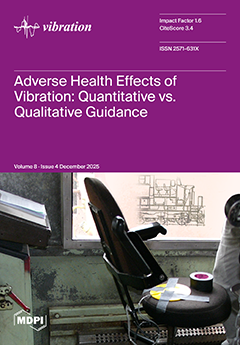Vibration-based predictive maintenance is an essential element of reliability engineering for modern automotive powertrains including internal combustion engines, hybrids, and battery-electric platforms. This review synthesizes advances in sensing, signal processing, and artificial intelligence that convert raw vibration into diagnostics and prognostics. It characterizes
[...] Read more.
Vibration-based predictive maintenance is an essential element of reliability engineering for modern automotive powertrains including internal combustion engines, hybrids, and battery-electric platforms. This review synthesizes advances in sensing, signal processing, and artificial intelligence that convert raw vibration into diagnostics and prognostics. It characterizes vibration signatures unique to engines, transmissions, e-axles, and power electronics, emphasizing order analysis, demodulation, and time–frequency methods that extract weak, non-stationary fault content under real driving conditions. It surveys data acquisition, piezoelectric and MEMS accelerometry, edge-resident preprocessing, and fleet telemetry, and details feature engineering pipelines with classical machine learning and deep architectures for fault detection and remaining useful life prediction. In contrast to earlier reviews focused mainly on stationary industrial systems, this review unifies vibration analysis across combustion, hybrid, and electric vehicles and connects physics-based preprocessing to scalable edge and cloud implementations. Case studies show that this integrated perspective enables practical deployment, where physics-guided preprocessing with lightweight models supports robust on-vehicle inference, while cloud-based learning provides cross-fleet generalization and model governance. Open challenges include disentangling overlapping sources in compact e-axles, coping with domain and concept drift from duty cycles, software updates, and aging, addressing data scarcity through augmentation, transfer, and few-shot learning, integrating digital twins and multimodal fusion of vibration, current, thermal, and acoustic data, and deploying scalable cloud and edge AI with transparent governance. By emphasizing inverter-aware analysis, drift management, and benchmark standardization, this review uniquely positions vibration-based predictive maintenance as a foundation for next-generation vehicle reliability.
Full article





